Technology. The technology used is a clever combination of disk striping, mirroring and parity, and the system uses smart-tech to adapt the storage space and secure backup of your data on the fly, depending on the number and capacities of the drives you’re using. There’s nothing revolutionary about the tech, it’s just that the developers seem to have put it all together in a rather intelligent way. From an operational point of view it means that you can swap disks out instantly, drive failures become irrelevant (as long as you’ve still got enough space for the ‘protected’ data of course) and you can upgrade your drives as you go without having to go through any complicated copying process or downtime while the new drive is recognised by the system. In practice you can literally slot the new larger drive in while you’re in the middle of copying files across from your computer to the Drobo unit. It’s really impressive. This marketing video gives a great demonstration of the power you get from this flexible architecture.
Robustness. It’s all about redundancy baby. It’s all well and good talking about it, and watching company videos, but how is it in practice? Well I had a good go at breaking the device. To simulate a drive failure I unplugged the largest 500GB drive and then immediately started copying across 75GB of data to Drobo while it was re-configuring itself to cope with the loss. There was no hiccup at all. The files started transferring across, albeit very slowly (127 minutes to completion) and the system blinked red/green to me for around 40 minutes while the rebuild occurred, after which all the lights turned green and the files continued to be transferred. I then slotted the 500 GB back in to see what would happen, and it carried on regardless. No problem, no glitches. Wondrous!
I did, however, manage to hang my laptop during all this by deciding to be a real pig. I asked the dashboard to conduct a diagnostic routine (which has to be pretty low level right?) while the 75 gigs were still in transit and Drobo was busy assimilating the re-inserted 500GB drive. Not a total hang (the caps lock light still worked) but everything else on the PC stopped functioning. I then had to do a full power down, unplug the power to Drobo, and restart everything to get back to normal. Result? Drobo had successfully completed the transfer of the largest 63GB file and elegantly stopped the transfer of the rest of the files during the power down. I just re-selected the remainder of the files and continued on with the transfer with no hassles whatsoever. Now that’s robust!
Target market. I talked with Mary Hwang, director of product marketing for Data Robotics, and she said that the original target market was anyone who dealt with large quantities of files – musicians, photographers and the like. “We have users editing HD video, as well as professional photographers and musicians using Drobo for archiving and backup!”, she confirmed, “Before Drobo many of them were having to struggle with managing a number of different drive systems. We’re about 50/50 PC and Mac users and we span the range from cool creative types to alpha geeks. In fact 20% of our users have Linux running on their primary computer.”
Constraints. Of course there are bound to be trade-offs with something designed to be as user friendly as this. First off is speed. Most people won’t notice the slight drop off in access speeds, but anyone needing hyper fast drive response all the time should probably look elsewhere. The spool up time on four drives can take several seconds from the dormant state, which could get annoying for some people. Likewise the noise could be a factor, as mentioned before.
One other issue to think about is the limitation to a particular type and format of drive. Right now 3.5″ SATA drives are plentiful and well priced, but at some point in the future they will be replaced by smaller, different tech formats, which will make this generation of Drobo redundant. It’s not a real issue of course, because that’s the nature of progress, but it’s something to remember and watch out for. No doubt by the time we’ve all moved on to 2.5 inch drives as standard there’ll be a Drobo X product on the shelves ready and waiting. Finally there is definitely a price premium involved here. In the US the product sells for $499.00 before you add any drives (in the UK it’s £349.00) so it’s a fairly steep investment to make. But if you plan on doing a lot of photography, music storage or the like, then this it clearly a great way to future proof your data, especially since you can start with small capacity low cost hard disks, and add larger units as they come down in price.
Conclusion. I started by saying that Drobo is one of the most impressive and exciting technologies I’ve seen for a long time, and close up exposure to the device has confirmed my initial expectations. It’s a well thought out, super clever piece of technology which hits the sweet spot of prosumer data storage needs at exactly the right moment. The ability to upgrade instantly on the fly, combined with the glorious luxury of zero-hassle data mirroring means that this is really the only storage anyone should need to stay safe and happy. In fact the only thing I can think of that would be better is to have two of the things, one box on-site and one off-site. Which of course marks me out as totally paranoid, but hey, the 4GB of photos of me in a green striped Mankini are priceless, all right?
Continue Reading… 1 2 3 4 [View All]

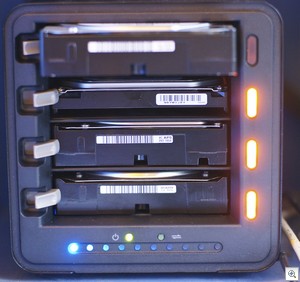
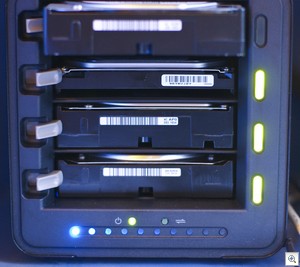
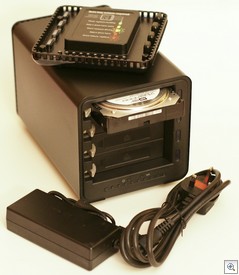
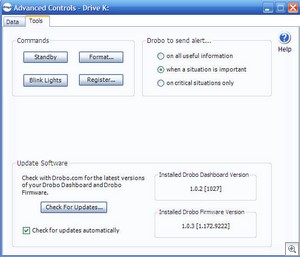

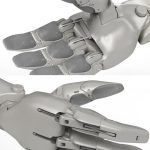

Very nice, but really only suitable for home users. Corect me if I am wrong but I could not not see any options for RAID, which is very important in terms of speed and redundancy for business.
On top of that capacity is quite small in my opinion.
Paul, the whole point of this box is redundancy but done more efficiently than RAID. The capacity is determined by the size of the disks you use, so if you have 4 x 1TB drives in the slots you will get 2.7 TB of useable space (the rest being for the mirroring of the data etc). See this forum post for more information.
Dang that’s pretty nifty, I’ve been looking for something similar for our place. The only problem I see is that’s only has a USB interface and can only be used if the PC is connected. I wonder if they’ll do a NAS version?
Although the laptop hang that you had seems to indicate that it will kick on regardless of whether a PC is attached or not, you just need the PC to access the files.
Red,
Thanks for your comment.
I do realise that the whole point of the box is redundancy, but my point was that having no option to change the RAID type is not great.
For example, some people may want to do striping as well as mirroring, or RAID 0+1 (see http://www.acnc.com/04_01_0_1.html ) . As it is , this product cannot do that as 5 discs would be required for this setup.
In addition, a network connection ideally gigabit , would have been nice. I see from the spec that it is USB…
I have a feeling that Drobo is designed for people who don’t want to worry about RAID configurations and just want a simple backup/storage device, Paul. Different target markets? :-)
Hi Red,
Yeah I do agree that it is designed for a different target market. But still it would have been nice for the manufactor to include a basic interface as well as an expert interface for the clients that would want this functionality.
Have you also heard of a free open source solution for people who would like to make their own NAS (provided they have a spare computer and a few hard drives)
Here is one : http://www.freenas.org/
Now that is one great machine! I loved the thing. But tis a tad bit too expensive for me. Les c what happens in the near future.
Get the DROBO Share if you want to use it as NAS. You are not limited to USB or FW-A.